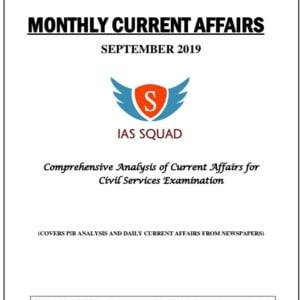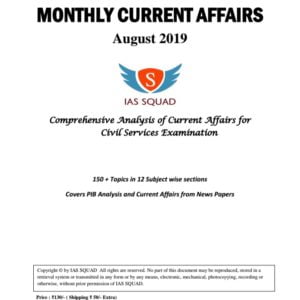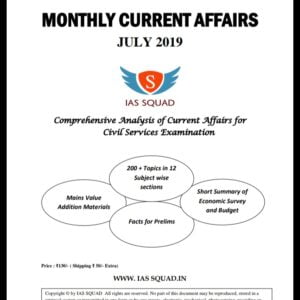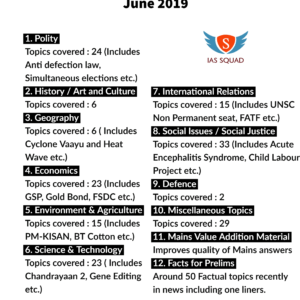Daily Current Affairs for UPSC CSE
Topics Covered
- Adjusted Gross Revenue
- Wild Polio Virus
- Recusal of Judges
- Air Quality Index & SAFAR
- Organoid
- Indian Ocean Rim Association
- Dirac metals
- Facts for Prelims : Palm oil / Malaysia, New Governors, Ulluru, Autophagy & Macrophages, SAGAR
1 . Adjusted Gross Revenue
Context : In a blow to telecom service providers, the Supreme Court on Thursday upheld the Department of Telecom’s move to recover adjusted gross revenue (AGR) of about ₹92,000 crore from them.
What is AGR?
- Telecom operators are required to pay licence fee and spectrum charges in the form of ‘revenue share’ to the Centre.
- The revenue amount used to calculate this revenue share is termed as the AGR.
- According to the DoT, the calculations should incorporate all revenues earned by a telecom company – including from non-telecom sources such as deposit interests and sale of assets.
- The companies, however, have been of the view that AGR should comprise the revenues generated from telecom services only and non-telecom revenues should be kept out of it.
About the issue
- The issue between DoT and the telecom companies has been on since 2005, when the Cellular Operators Association of India challenged the DoT’s definition for AGR calculation.
- Subsequently, in 2015, the TDSAT ruled that the AGR included all receipts, except capital receipts and revenue from non-core sources such as rent, profit on the sale of fixed assets, dividend, interest and miscellaneous income, etc.
- The government, meanwhile, continued to raise the issue of under-reporting of revenues to duck charges.
- The latest petition by the DoT was being heard in the Supreme Court, wherein the DoT sought interest, penalty and interest on penalty on the outstanding amount.
- These amounted to Rs 92,641 crore (disputed actual demand is Rs 23,189 crore, levy of Interest of Rs 41,650 crore, penalty of Rs 10,923 crore and interest on penalty of Rs16,878 crore)
- All the appeals against the TDSAT order dated April 23, 2015, alongside multiple appeals and verdicts by the DoT and the industry in various forums including High Courts and the Supreme Court of India, were heard before the Bench of Justice Arun Mishra, Justice S Abdul and Justice MR Shah.
Verdict
- The bench delivered the verdict and effectively upheld the definition of AGR calculation as stipulated by the DoT.
- The judgment said the gross revenue shall be inclusive of installation charges, late fees, sale proceeds of handsets (or any other terminal equipment, etc.), revenue on account of interest, dividend, value-added services, supplementary services, access or interconnection charges, roaming charges, revenue from permissible sharing of infrastructure and any other miscellaneous revenue, without any set-off for related item of expense, etc.
- The court explained that the government intended to pump revenue from its share of telecom gross revenue into developing remote and uncovered areas.
- But all it ended up doing was incur a colossal amount of ₹49.120 crore under the Universal Service Obligation Fund (USOF) and a committed liability of ₹59,774 crore for ongoing projects including laying of optical fibre cables up to gram panchayat areas under ‘Digital India Mission’.
- As a sign of the liberalisation allowed in the sector, the court highlighted how the 15% AGR, fixed as license fee under revenue sharing, was reduced to 13% and lastly to 8% in 2013.
- “Out of the 8%, a substantial portion of 5% is spent by the Central Government under the USOF,” the court pointed out.
USOF
- The New Telecom Policy (NTP) 1999 of Department of Telecom, GoI had Universal Service as one of its main objectives, as reproduced below –
- Strive to provide a balance between the provision of Universal Service to all uncovered areas, including the rural areas, and the provision of high-level services capable of meeting the needs of the country’s economy and encourage development of telecommunication facilities in remote, hilly and tribal areas of the country The NTP 1999 provided that the resources for meeting the Universal Service Obligation (USO) were to be generated through a Universal Access Levy (UAL), at a prescribed percentage of the revenue earned by the telecom licensees to be decided in consultation with the Telecom Regulatory Authority of India (TRAI).
- Further, NTP 1999 envisaged the implementation of USO Obligation for rural and remote areas would be undertaken by all fixed service providers who shall be reimbursed from the USOF. Other service providers would also be encouraged to participate in USO provision subject to technical feasibility and would be reimbursed from the USOF.
- Objectives
- Economic: Network extension & stimulate uptake of the ICT services
Social: Mainstreaming the underserved & un-served areas/groups by bridging the access gap
Political: to enable citizens exercise their political rights in an informed way and
Constitutional: Equitable distribution of the fruits of the telecom/digital revolution and fair allocation of national resource (pooled USO levy) via targeted subsidies
- Economic: Network extension & stimulate uptake of the ICT services
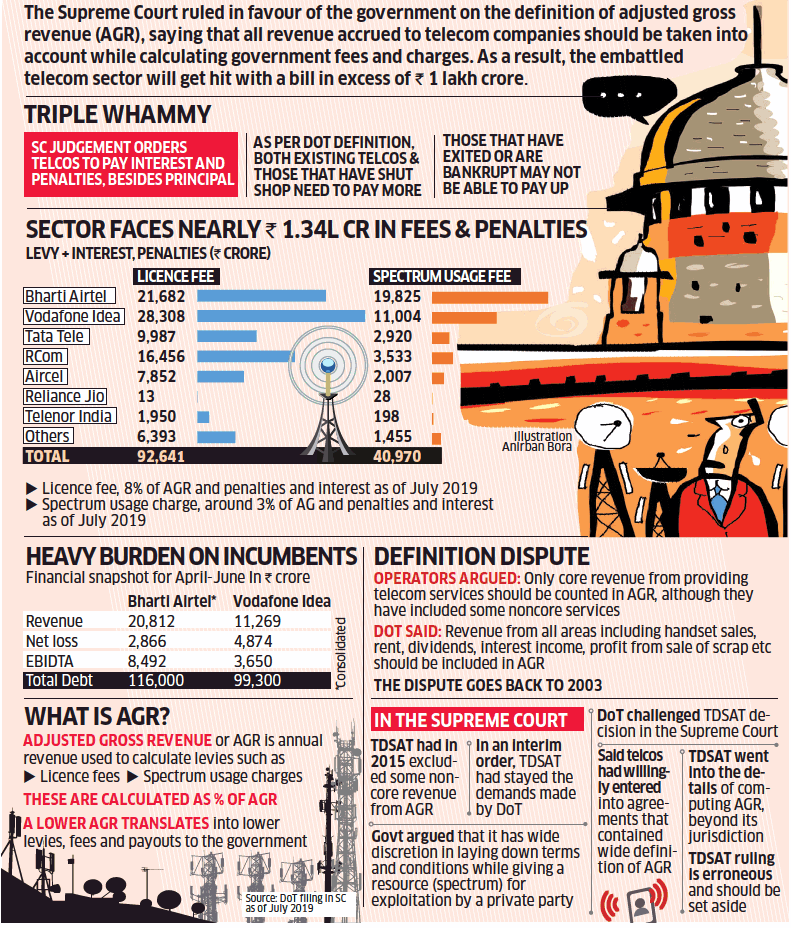
2 . Wild Polio Virus
Context : In an announcement by the World Health Organisation (WHO) on World Polio Day (October 24), an independent commission of experts declared that wild poliovirus type 3 (WPV3) has been eradicated worldwide.
About Wild Polio Virus
- There are three individual and immunologically-distinct wild poliovirus strains: wild poliovirus type 1 (WPV1), wild poliovirus type 2 (WPV2) and wild poliovirus type 3 (WPV3).
- Symptomatically, all three strains are identical, in that they cause irreversible paralysis or even death.
- But there are genetic and virologic differences which make these three strains three separate viruses that must each be eradicated individually.
- WPV3 is the second strain of the poliovirus to be wiped out, following the certification of the eradication of WPV2 in 2015.
- The last case of WPV3 was detected in northern Nigeria in 2012. Since then, the strength and reach of the eradication programme’s global surveillance system has been critical to verify that this strain is truly gone.
- Investments in skilled workers, innovative tools and a global network of laboratories have helped determine that no WPV3 exists anywhere in the world, apart from specimens locked in secure containment.
- This is a significant achievement that should reinvigorate the eradication process and provides motivation for the final step — the eradication of wild poliovirus type 1. This virus remains in circulation in just two countries, Afghanistan and Pakistan.
Global Polio Eradication Initiative
- The goal of the Global Polio Eradication Initiative is to complete the eradication and containment of all wild, vaccine-related and Sabin polioviruses, such that no child ever again suffers paralytic poliomyelitis.
- Launched in 1988 after the World Health Assembly passed a resolution to eradicate polio, the Global Polio Eradication Initiative, along with its partners, has helped countries to make huge progress in protecting the global population from this debilitating disease. As a result, global incidence of polio has decreased by 99.9% since GPEI’s foundation. An estimated 16 million people today are walking who would otherwise have been paralysed by the disease, and more than 1.5 million people are alive, whose lives would otherwise have been lost. Now the task remains to tackle polio in its last few strongholds and get rid of the final 0.1% of polio cases.
- The GPEI is a public-private global effort made up of national governments, partners including the World Health Organization, Rotary International, the US Centers for Disease Control and Prevention, UNICEF, the Bill & Melinda Gates Foundation and a broad range of long-term supporters.
3 . Recusal of Judges
Context : A judge need not recuse himself from a larger Bench scrutinising the correctness of his own past judgment, a Constitution Bench held in a verdict published on Thursday.
Details of the Judgement
- According to the Judgement no litigant can choose who should be on the Bench. He cannot say that a judge who might have decided a case on a particular issue, which may go against his interest, should not hear his case as part of a larger Bench
- Rendering a decision on any issue of law cannot be a ground for recusal of a judge; otherwise, no judge can hear a review, curative petition or a reference made to the larger Bench
- Justice Mishra reasoned that acquiescing to the wishes of parties to recuse would sound the death knell for judicial independence. It would lead to forum shopping. Pronouncing judgments was the duty of a judge. A judge cannot be suspected of bias for performing his sworn duty.
- “Previous judgment cannot constitute bias or predisposition or raise reasonable apprehension of bias.”
- The ultimate test is for the judge to decide and to find out whether he will be able to deliver impartial justice to a cause with integrity and with whatever intellectual capacity at his command
- In case the answer is that he will be able to deliver justice to the cause, he cannot and must not recuse from any case as the duty assigned by the Constitution has to be performed as per the oath and there lies the larger public interest.
- He cannot shake the faith that the common man reposes in the judiciary as it is the last hope for them.”
4 . Air Quality Index and SAFAR
Context : The air quality of Delhi is likely to spike to “severe” category due to the effect of firecrackers on Diwali night
About Air Quality Index
- Air Quality Index (AQI) is a tool for effective dissemination of air quality information to people.
- There are six AQI categories, namely Good, Satisfactory, Moderately polluted, Poor, Very Poor, and Severe.
- The AQI will consider eight pollutants (PM10, PM2.5, NO2, SO2, CO, O3, NH3, and Pb) for which short-term (up to 24-hourly averaging period) National Ambient Air Quality Standards are prescribed.
- Based on the measured ambient concentrations, corresponding standards and likely health impact, a sub-index is calculated for each of these pollutants. The worst sub-index reflects overall AQI.
- Associated likely health impacts for different AQI categories and pollutants have been also been suggested, with primary inputs from the medical expert members of the group.

State-of-the-Art Air Quality and Weather Forecast System (SAFAR)
- System of Air Quality and Weather Forecasting and Research known as “SAFAR” provides location specific information on air quality in near real time and its forecast 1-3 days in advance for greater metropolitan cities of India
- The SAFAR system is developed by Indian Institute of Tropical Meteorology, Pune, along with ESSO partner institutions namely India Meteorological Department (IMD) and National Centre for Medium Range Weather Forecasting (NCMRWF).
- The ultimate objective of the project is to increase awareness among general public regarding the air quality in their city well in advance so that appropriate mitigation measures and systematic action can be taken up for betterment of air quality and related health issues.
- The system will be an integral part of India’s first Air Quality Early Warning System operational in Delhi and will strengthen the existing air quality network of SAFAR, Central Pollution Control Board and Delhi Pollution Control Committee.
- In addition to regular air quality parameters like PM2.5, PM10, Sulfur Dioxide, Ozone, Nitrogen Oxides, Carbon Monoxide, the system will also monitor the existence of Benzene, Toluene and Xylene.
5 . Organoid
Context : At Neuroscience 2019, the Society for Neuroscience’s 49th annual meeting, held in U.S., two neuroscientists warned the gathering that fellow scientists are “perilously close” to crossing the ethical red line of growing mini-brains or organoids in the laboratory that can perceive or feel things.
Background
- Scientists have already transplanted lab-grown brain organoid to adult animals. The transplanted organoid had integrated with the animal brain, grown new neuronal connections and responded to light.
- Similarly, lung organoid transplanted into mice was able to form branching airways and early alveolar structures. These are seen as a step towards potential “humanisation” of host animals.
What is an organoid?
- Organoids are a group of cells grown in laboratories into three-dimensional, miniature structures that mimic the cell arrangement of a fully-grown organ.
- They are tiny (typically the size of a pea) organ-like structures that do not achieve all the functional maturity of human organs but often resemble the early stages of a developing tissue.
- Most organoids contain only a subset of all the cells seen in a real organ, but lack blood vessels to make them fully functional.
- In the case of brain organoids, scientists have been able to develop neurons and even make specific brain regions such as the cerebral cortex that closely resemble the human brain.
- The largest brain organoids that have been grown in the laboratory are about 4 mm in diameter.
How are organoids grown in the laboratory?
- Organoids are grown in the lab using stem cells that can become any of the specialised cells seen in the human body, or stem cells taken from the organ or adults cells that have been induced to behave like stem cells, scientifically called induced pluripotent stem cells (iPSC).
- Stem cells are provided with nutrients and other specific molecules to grow and become cells resembling a specific organ. The growing cells are capable of self-organising into cellular structures of a specific organ and can partly replicate complex functions of mature organs — physiological processes to regeneration and being in a diseased state.
- Organoids of the brain, small intestine, kidney, heart, stomach, eyes, liver, pancreas, prostate, salivary glands, and inner ear to name a few have already been developed in the laboratory.
Benefits
- Researchers have been successful in generating organoids of increasing “complexity and diversity”. Since the organoids closely resemble mature tissues, it opens up new vistas.
- These include studying the complex arrangements of cells in three-dimension and their function in detail, and understanding how cells assemble into organs.
- Organoids can be used to study the safety and efficacy of new drugs and also test the response of tissues to existing medicines
- Organoids will bring precision medicine closer to reality by developing patient-specific treatment strategies by studying which drugs the patient is most sensitive to.
- Since the use of animals during drug development studies is becoming increasingly difficult, the focus has been on refining, reducing and replacing them. While scientists have been increasingly using human cell lines and other methods, such alternatives have some inherent limitations — they cannot mimic the whole organ system. Organoids are a far superior alternative to cell lines.
How have organoids helped in our understanding of diseases?
- Organoids offer new opportunities to studying proteins and genes that are critical for the development of an organ. This helps in knowing how a mutation in a specific gene causes a disease or disorder.
- Researchers have used brain organoids to study how the Zika virus affects brain development in the embryo.
- Scientists are already using stem cells taken from tumours to grow organoids that are poised to develop cancer. The ability to grow organoids using cancer stem cells allows researchers to study the genes, proteins and signalling pathways that cancer cells use to develop and grow. They are also using healthy organoids to identify and verify the gene mutations that cause cancer.
Ethical challenges of growing organoids?
- Scientists argued that the largest brain that has been grown in the laboratory is only 4 mm in diameter and contains only 2-3 million cells.
- In comparison, an adult human brain measures 1,350 cubic centimetres, and has 86 billion neurons and another 86 billion non-neuronal cells and a similar number of non-neuronal cells.
- Organoids do not have sensory inputs and sensory connections from the brain are limited. Isolated regions of the brain cannot communicate with other brain regions or generate motor signals. Thus, the possibility of consciousness or other higher-order perceptive properties [such as the ability to feel distress] emerging seems extremely remote.”
6 . Indian Ocean RIM Association
Context : The upcoming Indian Ocean Rim Association ministerial meeting in Abu Dhabi will be keenly watched as India continues to promote its official policy of “coordination, cooperation and partnership” in the regional maritime domain.
About Indian Ocean RIM Association
- Indian Ocean RIM Association is an inter-Govt organisation
- Countries bordering the Indian Ocean are its members
- It has many disaster-prone countries among its 22 members and nine dialogue partners. DRM is one of its priority areas and its Action Plan (2017-2021) has specific goals to improve resilience in IORA countries.
- It was established as Indian Ocean Rim Initiative in Mauritius on March 1995 and formally launched in 1997 by the conclusion of a multilateral treaty known as the Charter of the Indian Ocean Rim Association for Regional Cooperation.
- IORA’s apex body is the Council of Foreign Ministers (COM) which meets annually.
- Decisions on all matters and issues and at all levels will be taken on the basis of consensus
- Members : Commonwealth of Australia, People’s Republic of Bangladesh, Union of Comoros, Republic of India, Republic of Indonesia, Islamic Republic of Iran, Republic of Kenya, Republic of Madagascar, Malaysia, Republic of Maldives, Republic of Mauritius, Republic of Mozambique, Sultanate of Oman, Republic of Seychelles, Republic of Singapore, Federal Republic of Somalia , Republic of South Africa, Democratic Socialist Republic of Sri Lanka, United Republic of Tanzania, Kingdom of Thailand, United Arab Emirates and Republic of Yemen.
Objectives of IORA
- To promote sustainable growth and balanced development of the region and member states
- To focus on those areas of economic cooperation which provide maximum opportunities for development, shared interest and mutual benefits
- To promote liberalisation, remove impediments and lower barriers towards a freer and enhanced flow of goods, services, investment, and technology within the Indian Ocean rim.
Six priority areas
- maritime security,
- trade and investment facilitation,
- fisheries management,
- disaster risk reduction,
- academic and scientific cooperation and
- tourism promotion and cultural exchanges.
7 . Dirac metals
What are Dirac metals?
- Normal metals like gold and silver are good conductors of electricity. A key aspect that decides the quality of conduction is the way energy depends on the momentum of electrons.
- Dirac metals differ from normal metals in that the energy depends linearly on the momentum. This difference is responsible for their unique properties.
- Semi-Dirac metals behave like Dirac metals in one direction and like normal metals in the perpendicular directions (since their microscopic structure is different along the two directions).
- Within any material, charge carriers, such as electrons, acquire an effective mass which is different from their bare mass depending on the nature of the material. The effective mass and the number of states available for the electron to occupy when it is excited by an electric field, for example, determine the conductivity and other such properties.
- This is also true of a semi-Dirac metal. In particular, the effective mass becomes zero for conduction along a special direction.
8 . Facts for Prelims
Palm oil / Malaysia
- India, the world’s biggest importer of edible oils
- Palm oil accounts for nearly two-thirds of India’s total edible oil imports. India buys more than 9 million tonnes of palm oil annually, mainly from Indonesia and Malaysia
New Governors
- Girish Chander Murmu appointed the first Lt Governor of Jammu and Kashmir
- R K Mathur was appointed the first Lt Governor of strategically located Ladakh.
Ulluru
- Uluru also known as Ayers Rock is a large sandstone rock formation in the southern part of the Northern Territory in central Australia.
- Uluru is sacred to the Pitjantjatjara Anangu, the Aboriginal people of the area.
- The area around the formation is home to an abundance of springs, waterholes, rock caves and ancient paintings.
- Uluru is listed as a UNESCO World Heritage Site.
- Uluru and Kata Tjuta, also known as the Olgas, are the two major features of the Uluṟu-Kata Tjuṯa National Park.
Autophagy & Macrophages
- Autophagy is the natural, regulated mechanism of the cell that removes unnecessary or dysfunctional components. It allows the orderly degradation and recycling of cellular components.
- Macrophages are important cells of the immune system that are formed in response to an infection or accumulating damaged or dead cells. Macrophages are large, specialized cells that recognize, engulf and destroy target cells
SAGAR (Security and Growth for All in the Region)
- The vision of SAGAR was enunciated by Prime Minister in March 2015.
- It is a maritime initiative which gives priority to Indian Ocean region for ensuring peace, stability and prosperity of India in Indian Ocean region.
- SAGAR has inter-related elements these are enhancing capacities to safeguard land and maritime territories & interests; deepening economic and security cooperation in the littoral; action to deal with natural disasters and maritime threats like piracy, terrorism.
- It also includes engaging with countries beyond our shores with the aim of building greater trust and promoting respect for maritime rules, norms and peaceful resolution of disputes
